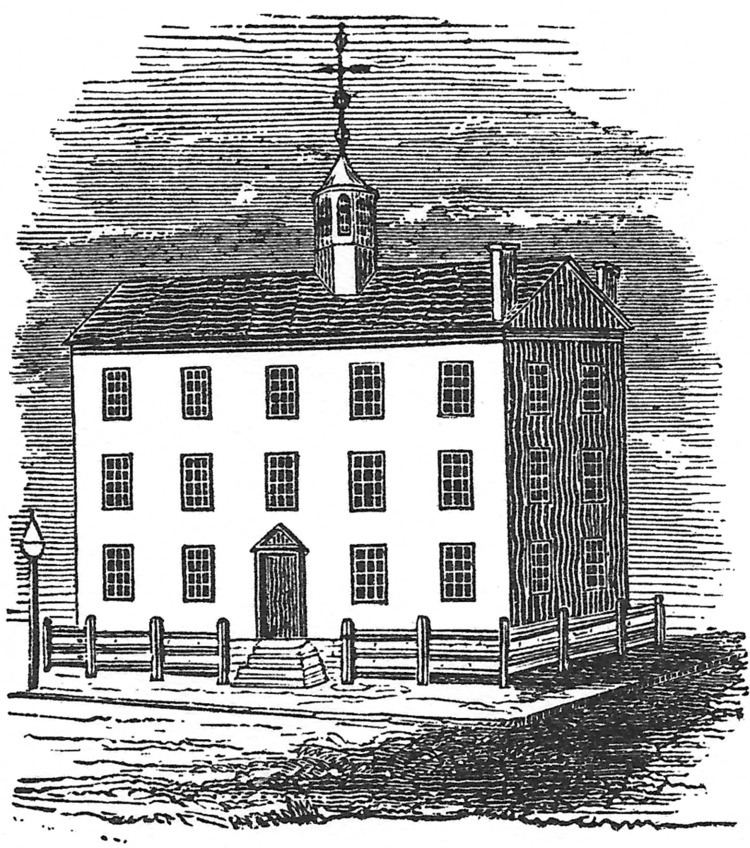Members 32 | Members 100 | |
 | ||
Term July 1, 1804 – June 30, 1805 Party control Democratic-Republican (26-4) | ||
The 28th New York State Legislature, consisting of the New York State Senate and the New York State Assembly, met from November 6, 1804, to April 10, 1805, during the first year of Morgan Lewis's governorship, in Albany.
Contents
Background
Under the provisions of the New York Constitution of 1777, amended by the Constitutional Convention of 1801, 32 Senators were elected on general tickets in the four senatorial districts for four-year terms. They were divided into four classes, and every year eight Senate seats came up for election. Assemblymen were elected countywide on general tickets to a one-year term, the whole assembly being renewed annually.
In 1797, Albany was declared the State capital, and all subsequent Legislatures have been meeting there ever since. In 1799, the Legislature enacted that future Legislatures meet on the last Tuesday of January of each year unless called earlier by the governor.
In 1804, Seneca County was split from Cayuga County, and was apportioned one seat in the Assembly, taken from Cayuga.
U.S. Senator John Armstrong resigned on June 30, 1804, after his appointment as U.S. Minister to France.
At this time the politicians were divided into two opposing political parties: the Federalists and the Democratic-Republicans. The Democratic-Republican Party was split into two opposing factions: the "Regulars" who supported Morgan Lewis, and the "Burrites" who supported Vice President Aaron Burr. Lewis, the Chief Justice of the New York Supreme Court, had been nominated for Governor by his party, but Burr, after being dropped from the presidential ticket in favor of Gov. George Clinton, ran against Lewis. Burr also received the support of the majority of the Federalists although his enemy Alexander Hamilton, the leader of the Federalists, advocated against it and supported Lewis.
Elections
The State election was held from April 24 to 26, 1804. Morgan Lewis was elected Governor of New York, and State Senator John Broome was elected Lieutenant Governor of New York.
Senators William Denning and Ebenezer Purdy (both Southern D.) were re-elected. Samuel Brewster, Stephen Hogeboom (both Middle D.) and Henry Huntington (Western D.); and Assemblymen Thomas Thomas (Southern D.), Stephen Thorn (Eastern D.) and Jedediah Peck (Western D.) were also elected to Senate. All eight were "regular" Democratic-Republicans.
Sessions
The Legislature met at the Old City Hall in Albany on November 6, 1804, to elect presidential electors; and adjourned on November 12.
Dem.-Rep. Alexander Sheldon was re-elected Speaker.
On November 9, 1804, the Legislature elected 19 presidential electors, all Democratic-Republicans: William Floyd, Sylvester Dering, James Fairlie, Cornelius Bergen, John Haring, Ezra Thompson, Major John Wood, Conrad E. Elmendorf, Stephen Miller, Albert Pawling, Isaac Sargent, Thomas Brooks, Matthias B. Hildreth, Jonas Earll, Sr., Joseph Ellicott, Henry Quackenbos, Adam Comstock, Abraham Bancker and ???. They cast their votes for Thomas Jefferson and George Clinton.
On November 9, 1804, the Legislature elected Samuel L. Mitchill (Dem.-Rep.) to succeed John Armstrong in the U.S. Senate.
The Legislature met for the regular session on January 23, 1805; and adjourned on April 10.
During this session the Merchant's Bank of New York was chartered. The bank had been founded by Federalists in competition to the Bank of the Manhattan Company which was run by Democratic-Republicans. The Democratic-Republican majority of the Assembly of 1804 had not only refused to grant a charter, but actually ordered the Merchant's Bank to shut down by May 1805. During this session, the bank bribed enough legislators to have the charter approved, although the Democratic-Republican leaders advocated strongly against it. Gov. Morgan Lewis, who had been Chief Justice and who was wealthy beyond corruptibility, spoke out in favor of granting the charter. This was resented by the party leaders DeWitt Clinton and Ambrose Spencer, and eventually led to a split of the party into "Lewisites" and "Clintonians".
Districts
Members
The asterisk (*) denotes members of the previous Legislature who continued in office as members of this Legislature. Thomas Thomas, Stephen Thorn and Jedediah peck changed from the Assembly to the Senate.
Employees
Assemblymen
The asterisk (*) denotes members of the previous Legislature who continued as members of this Legislature.
